Hands-On With the First Digital SLR/HD Video Camera
Taking the new Nikon D90 out for a spin
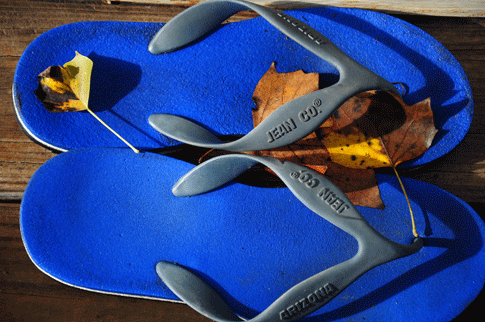
We may earn revenue from the products available on this page and participate in affiliate programs. Learn more ›
It’s ironic that the first digital SLR with video capabilities comes from a company that has never made a camcorder. But that didn’t stop Nikon from breaking new ground with the 12-megapixel D90, the long-anticipated successor to the popular D80 prosumer SLR.
Selling for $1,000 without a lens or $1,300 with an 18–105-millimeter image-stabilized zoom lens, the camera will probably draw photographers with a wide range of skills. DSLR novices will feel at home with familiar features such as face detection and scene modes, and advanced shooters will appreciate trickle-down technology from Nikon’s higher-end cameras such as the D700’s long-exposure noise-reduction controls, Active D-Lighting (which prevents blown-out highlights while maintaining detail in dark parts of the photo) and a gorgeous three-inch LCD.
The D90 retains the look and feel of the D80 (which will continue to be available—at least for a while), and current Nikon DSLR users will transition easily to the new model. Others will appreciate the camera’s on-board help system to guide them through unfamiliar features and functions.
A newly developed 12-megapixel CMOS sensor provides expanded light sensitivity, which the D90 handles brilliantly even at high ISOs up to 6400 (the D80 maxed out at 3200). At ISO 6400, you can shoot under extremely low-light conditions and still obtain a shutter speed fast enough to alleviate blurry pictures. Or you can bump up the ISO to get a really fast shutter speed to stop the action of a tennis match or a racecar whizzing around the track.
Naturally, image noise—a grainy look associated with high ISOs—will be present. But with the D90 you can control how much noise reduction is applied (which softens the image to hide the graininess). The sensor also provides a wide dynamic range, so your pictures will capture a broad swath of bright highlights and deep, rich blacks.
Control freaks will love the D90’s multitude of fine-tuning features, such as the ability to adjust sharpness, contrast, brightness, saturation and hue—and save custom combinations of those adjustments. SLR newbies stepping up from a point-and-shoot can start out using the camera’s enhanced automatic options like Auto, Program Auto or Scene modes and then ease into advanced shooting. If you’re not happy with the results, you can retouch the images in playback mode. You can brighten dark exposures, adjust color, remove redeye, straighten a crooked picture, and more. But image quality is very, very good even at the default settings.
The camera is fast in all aspects; even its startup time is a negligible 0.15 second. Paired with SanDisk’s new, high-speed Extreme II 30MB/s SDHC memory card, the D90 fires off 4.5 shots per second for up to 39 images (you may get only about 3 fps with other cards). Granted, Canon’s rival 40D and 50D beat that by almost 2 fps, but the less-expensive D90 is speedy enough for almost any situation.
While you’re at it, add the new Eye-Fi card to wirelessly transfer images to your computer or upload them straight to photo-sharing sites such as Picasa. The D90 has a special menu setting for the Eye-Fi that lets you turn the wireless function off to save power or for traveling by plane. Eye-Fi also uses data from Wi-Fi hotspots to add approximate geotag data to your photos for displaying them on an online map at sites like Flickr or Nikon’s MyPictureTown. For more precise geotagging, you can attach Nikon’s GP-1 GPS accessory.

Fine Details
I’m not a big fan of Live View and prefer to use the optical viewfinder, rather than the LCD, for composing and shooting. But Nikon makes it one-touch easy to activate Live View. Autofocus works in this mode for still images, which might motivate me to use it more often. But more important, Live View—which flips the mirror up and holds it open (normally, the mirror flips up just long enough for a picture to be snapped)—makes video capture possible.
The D90 offers three flavors of video: D-Movie (high-definition, 1,280 by 720 pixels at 24fps), VGA and QVGA. D-Movie’s 24-frames-per-second rate (versus standard video cameras’ 30fps) is designed to give video a “cinematic” cadence, similar to what you see on the big screen. I liked the effect, but for many people, it may be hard to tell the difference between this and the regular 30fps video rate. Thanks to the large sensor, overall quality, including in low light, is very good, with smooth transitions, accurate colors and generally even exposures.
Shooting video on the D90 offers a number of exciting benefits. You can adjust settings, such as choosing a Picture Control that lets you customize features like sharpness, contrast and color saturation. You need to set these before you start shooting, however; you can’t tweak them once you’re rolling. And you have the benefit of using a wide variety of lenses. One drawback: Autofocus isn’t available in movie mode, so hone your manual-focus skills. Zooming is also manual, and doing both, while trying to hold the camera steady, is a challenge (unless the camera is on a tripod). Fortunately, Nikon’s image-stabilizing VR lenses work in video mode to help compensate for the difficulty of holding the camera steady.
A wide-angle lens provides the broadest depth of field, so more of the picture is in focus, making it less important to manually adjust the lens. But you can get some interesting effects with other lenses. A telephoto lens, for example, will give you a shallow depth of field, blurring out everything but your main subject.
HD video is limited to a maximum of five minutes at a time to avoid overheating the sensor, but that’s plenty of time for grabbing a clip. (Additionally, Live View—which can also cause the sensor to overheat—is limited to about one hour of continuous use.) The camera will automatically shut down if the sensor gets too hot, although you’ll get a 30-second countdown warning before that happens. The camera can capture VGA and QVGA clips of up to 20 minutes.
Between the weight of the camera and lens and having to use manual focus and zoom, shooting video with the D90 is more challenging than capturing clips with a compact camera. But we expect this process to get better on later cameras, and we expect more SLRs to have video capability in the future. So kudos to Nikon for being the first.
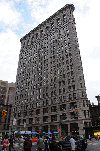
Nikon D90
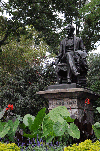
Greens

Fine Details

Rich Colors
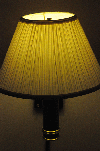
Dim Conditions
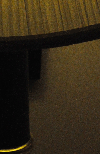
Dim Conditions Close Up